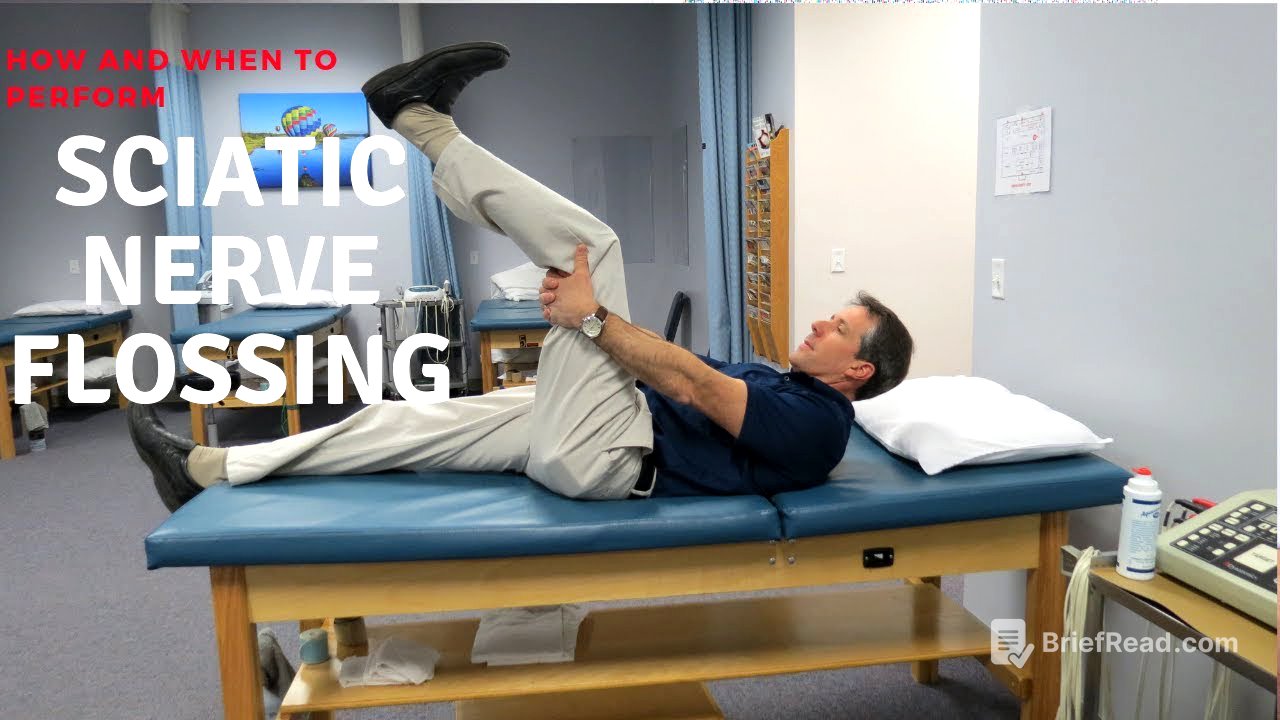TLDR;
This video explains sciatic nerve flossing, an exercise to relieve pain down the leg. The pain can be caused by a herniated disc or myofascial tightness around the sciatic nerve. The exercise involves lying on your back, lifting your leg with your hands behind your knee, and gently pumping your foot or ankle to encourage the nerve to glide smoothly. It's important not to overstretch, as too much tension can worsen the pain.
- Sciatic nerve flossing helps the nerve glide smoothly.
- Myofascial tightness can cause pain down the leg.
- Gentle pumping of the foot or ankle is key.
Introduction to Sciatic Nerve Flossing [0:00]
The video introduces sciatic nerve flossing as a method to alleviate pain that extends down the leg. This pain often arises from a herniated disc or nerve root compression in the back. However, the presenter notes that pain can also stem from myofascial tightness, where soft tissues adhere to the sciatic nerve, restricting its movement. Nerves prefer gliding within soft tissue rather than being stretched, making nerve flossing a beneficial exercise.
Performing the Sciatic Nerve Floss [0:52]
The presenter details how to perform the sciatic nerve floss. Start by lying on your back and placing your hands behind your knee. Pull your foot back and lift your leg, keeping your femur straight. Raise the leg until you feel tension in the back of the leg, possibly with some tingling in the foot. Then, back off slightly and pump your foot five times, maintaining the leg's position.
Alternative Method and Important Considerations [1:25]
An alternative method involves pulling your toes towards your nose and straightening your leg until you feel maximum tension. Then, ease off slightly and pump your ankle back and forth. The presenter stresses the importance of avoiding overexertion. Too much tension on the sciatic nerve can increase pain, inflammation, and irritation. The exercise aims to get the sciatic nerve moving, which can reduce tingling and discomfort in the leg, especially if caused by muscle and fascia adhering to the nerve.









